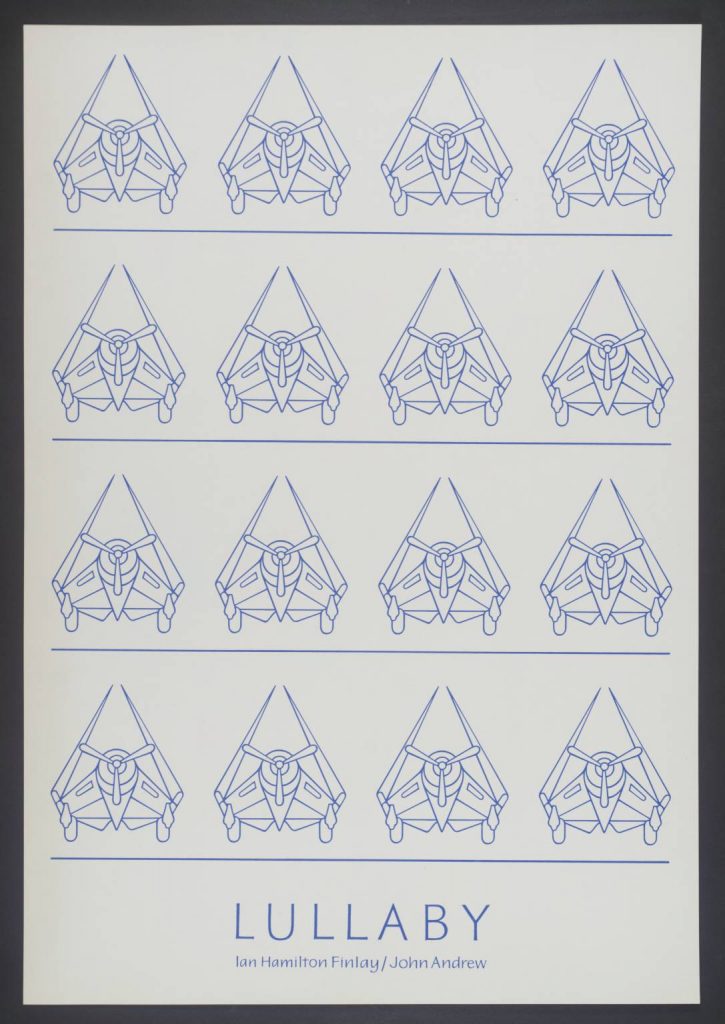LULLYBY. 1975.
Dunsyre: Wild Hawthorn Press, 1975
58.5 x 48.5cm, blue on white silkscreen. The image is of a number of airplanes with their wings raised (as found in the belly of an aircraft carrier) so to allow them to be placed more closely to each other. Finlay by adding the title Lullaby indicates that these planes might be seen as somehow sleeping - and the visual image reminds one of young birds in a nest. Hence this is a visual poem - the image having double meanings and hinting at subtle meanings.
The image we have used here is from a publication - the print we hold is framed in wood and glass and hard to image without reflections - but the work is in VG+ condition.












